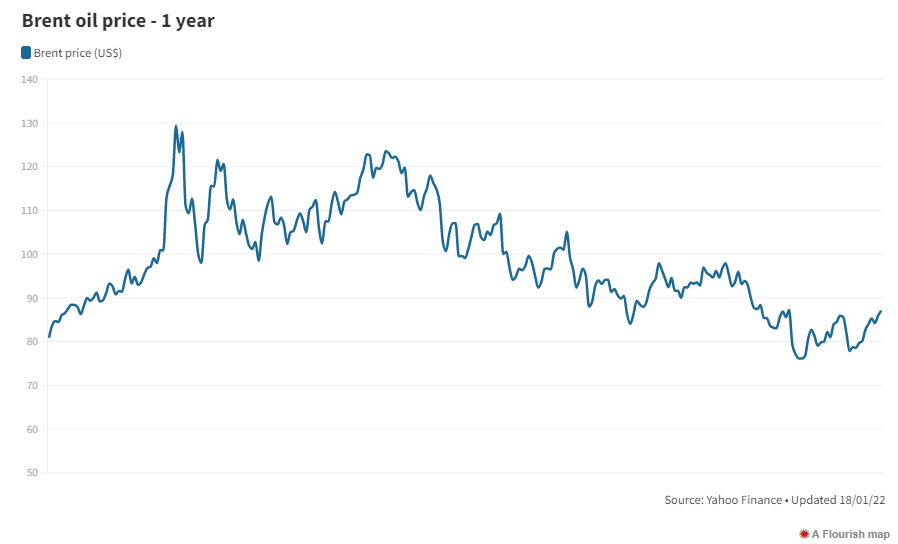
A drilling platform at Norway's giant offshore Johan Sverdrup field.
Global oil demand will surge to a “record” this year following the end of coronavirus restrictions in China, the world’s second-largest economy and leading crude importer, according to the International Energy Agency.
Oil demand will rise by 1.9 million barrels a day to 101.7 million bpd in 2023, said the IEA, which had previously estimated a growth of 1.7 million bpd.
Nearly half the gain in crude demand will come from China, which has reopened its borders for the first time in three years, triggering a sharp rise in airline bookings.

“China will drive nearly half this global demand growth, even as the shape and speed of its reopening remain uncertain,” said the IEA in its monthly oil market report on Wednesday.
"Two wild cards dominate the 2023 oil market outlook: Russia and China."
“The well-supplied oil balance at the start of 2023 could quickly tighten, however, as western sanctions impact Russian exports,” said the IEA.
Demand in the Organisation for Economic Co-operation and Development (OECD) countries slumped by 900,000 bpd in the fourth quarter as weak industrial activity and weather effects weighed.
Meanwhile, Russian oil exports declined in December after an EU crude embargo and a G7 price cap on the country’s crude shipments came into effect.
Russian crude exports fell by 200,000 bpd last month, compared with November, the IEA said.
At the same time, Russian diesel exports surged to a multiyear high of 1.2 million bpd, of which 720,000 bpd was destined for the EU, the agency said.
The country’s oil export revenues fell by $3 billion to $12.6 billion in December.
While Russian shipments initially collapsed after the sanctions of December 5, exports have “partially” rebounded, the IEA said.
Global crude oil stocks surged by 79.1 million barrels in November — hitting their highest levels since October 2021 — on a growth in non-OECD inventories, said the IEA.
Opec stuck to its global oil demand forecast for this year, despite an improving economic outlook in China.
On Tuesday, Opec Secretary General Haitham Al Ghais told Bloomberg that the group was “very bullish” on China, which could drive a 500,000 bpd growth in oil demand this year.
Addressing talks of a supply deficit in the second half of 2023, Mr Al Ghais said the situation would become clearer after the Lunar New Year in China.
“There are many fluid factors moving together at the same time, whatever it takes to manage the market and keep it stable — we will do,” he said.
Oil prices rose in afternoon trading following the IEA’s report.
Brent, the benchmark for two thirds of the world’s oil, was trading 1.16 per cent higher at $87.08 a barrel at 2.36pm UAE time on Wednesday. West Texas Intermediate, the gauge that tracks US crude, was up 1.72 per cent to $81.56 a barrel.
Global growth is projected to decline to 1.7 per cent this year from the 3 per cent forecast six months ago, the World Bank said in its latest Global Economic Prospects report released this month.
This is the third weakest pace of growth in about three decades, reflecting global monetary tightening, the effects of the Ukraine-Russia war, high inflation levels, worsening financial conditions and weaker growth in the US, China and the euro area.